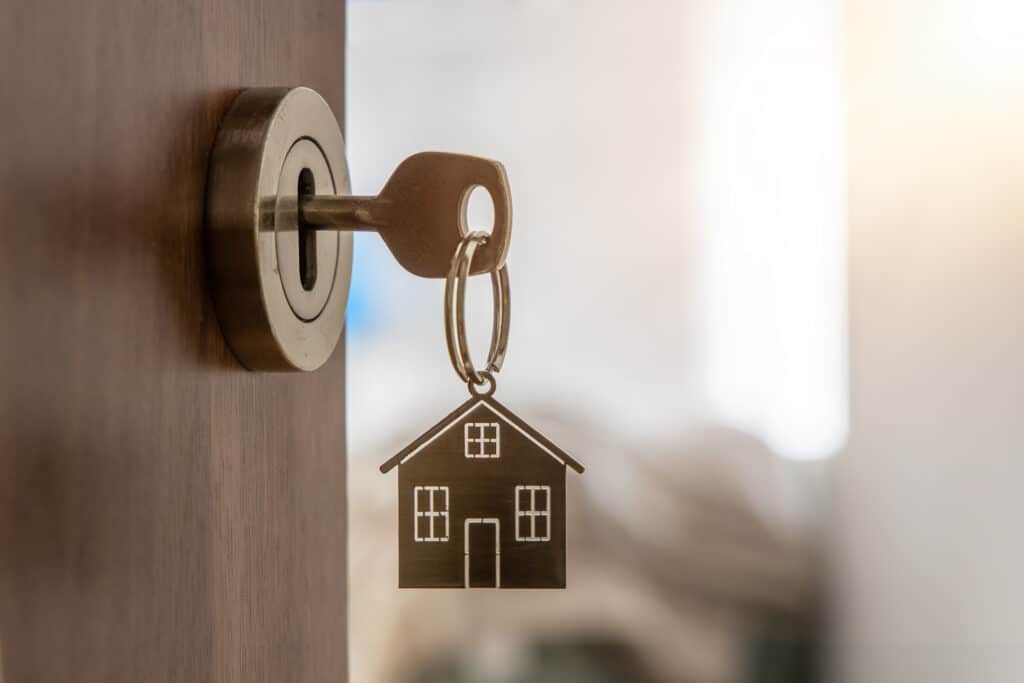Are you a first-time homebuyer? Maybe someone looking to upgrade their housing situation? That’s an exciting, albeit overwhelming, place to be.
Believe it or not, finding your dream home has many more factors than a pretty design and a good neighborhood. To help simplify the process for you, I’ve entailed my decade’s worth of real estate knowledge. This guide will contain essential information about finding your dream home and closing the deal on it.
A home is one of life’s most significant investments. Let’s ensure you’re doing it right rather than ending up with a money vacuum.
Let’s begin!
Step 1: Start with Research
The first step to any new process should be research. Not coincidentally, this step is also the most important.
Before you even begin looking at houses, spend some time researching the market and beginning to assess your budget. Take into account more than just what you can afford – think about what type of amenities or features you’d like to have in your home. This will help guide you toward searching for the right house.
From there, you can begin browsing. This is a type of research, as well. Casual home tours can give you a great idea of the space you could see yourself investing in.
Step 2: Determine Your Budget
Before you further explore your dream home, it’s time to get serious and determine your budget.
Determining your estimated budget will give you a better idea of the type of home you can afford and help you avoid the disappointment of searching and falling in love with a property that’s out of your price range.
For instance, in Australia, you can tap the help of seasoned builders like Home Group to guide you in purchasing house and land packages in Perth to ensure that you get your hard-earned money’s worth.
When determining your budget, consider not just the purchase price of the house but also other expenses such as closing costs, property taxes, and homeowners insurance.
One of the best methods homebuyers use for determining their budget is the 28% rule. This rule simply states that you shouldn’t opt for a mortgage over 28% of your monthly income.
Step 3: Get Pre-Approved for a Mortgage
Getting pre-approved for a mortgage is the next step after deciding on your budget. This will help you determine your borrowing capacity and monthly mortgage payments. It also shows sellers that you’re a serious buyer and can give you an advantage over other potential buyers.
Step 4: Determine Your Must-Haves
Before you start looking at homes, make a list of the must-haves in your new home. Make a list of things you can’t live without in your new home. This will help you narrow and filter your search and avoid wasting time looking at homes that don’t meet your criteria.
Many people make the mistake of believing must-haves should mainly revolve around aesthetics. These are the same people who end up throwing away tons of money into a home that was designed to fall apart — something they may have noticed if they looked closer. To better avoid this situation, review this guide on what to look out for when buying a house.
Step 5: Get Your Finances Straight
Before you can seriously begin searching for your dream home, ensuring your finances are in order is essential. Make sure that all of your debts are paid off and that your credit score is as high as possible. Improving both will increase your likelihood of securing a loan with better terms and interest rates.
When you’re in the process of applying for a home loan, lenders are concerned with one thing: whether or not you’ll be able to pay them back. Make sure it’s easy to tell that you have a steady income, cash for a down payment, and extra finances for taxes and closing costs. Get ahead of the game by having your recent banking activity and significant investments on hand, as well.
If your finances are slightly out of order, there are concrete steps you can take to get back on track for buying a home. These include:
- Make sure to pay your bills on time
- Maintain a good credit utilization ratio by not using up all of your available credit each month
- Refrain from opening new credit accounts
Step 6: Talk to a Realtor
Working with a good reliable estate agent can help you find your dream home faster and with less stress. A good agent will have access to properties that may not be listed on public websites, and they can help you negotiate a fair price for the home. They can also provide valuable advice throughout the home-buying process.
Generally speaking, don’t be afraid to ask questions and seek advice throughout the process. Your real estate agent, mortgage lender, and other professionals involved in the home-buying process are there to help you make informed decisions and achieve your dream of owning a home.
Step 7: Think About Your Long Term Needs
When choosing a home, think beyond the present and consider your long-term needs. You may have to stay in the same place for several years, so now is the time to think ahead. Ask yourself whether you plan to start a family or how much space you’ll need for future home projects. Also, look into the neighborhood to see if any schools or parks are nearby, any potential for future developments, and other amenities you might need.
It would also be wise to consider how much money you’ll need to maintain your property over the years. Property taxes, repairs, renovations, utilities, and more all add up, so make sure you can afford these costs in the long run.
Step 8: Consider Location, Careers Etc.

Location is as important as the home itself regarding real estate. Consider proximity to work, schools, parks, and shopping. Also, consider the neighborhood, including safety, noise levels, and property values.
One of the most popular locations you can invest in right now is the Florida real estate market. Over the years, Florida has seen a substantial increase in people moving in to enjoy the warm weather. So if you are looking for such a warm and safe investment location, check out the beautiful villas in Seven Springs here with the best realtors to guide you.
Step 9: Attend Open Houses
Attending open houses is a fantastic way to understand various neighborhoods and home designs. It can also help you narrow your search and better understand what you want in a home. Make sure to take notes and photos during your visits to help you remember the details of each home.
Step 10: Don’t Skip the Inspection
Finding your dream home takes time, so don’t rush the process. Finding a home you love that meets your needs is essential, so be patient and keep an open mind. It may take some time, but with persistence and the help of an excellent real estate agent, you’ll find the perfect home.
Before submitting an offer on a house you adore, it’s crucial to get it inspected. Any potential concerns with the house, such as structural difficulties or concealed damage, can be found during a home inspection. Doing this can save money in the long run.
Step 11: Make a Competitive Offer
When making an offer on a home, it’s essential to create a competitive offer that reflects the current market conditions. Your real estate agent can help you determine a fair price for the home and negotiate with the seller on your behalf.
Step 12: Don’t Get House Fever
Although getting attached to a dream home is natural, try not to get too attached. It’s easy to go above your budget or be swayed by emotions when you find the perfect house—but try to resist this “house fever.” Make sure that any offer you make aligns with what you can afford, and stick to your budget.
Step 13: Close the Deal
Once your offer has been accepted, close the deal in time. This involves finalizing your mortgage, signing the paperwork, and transferring property ownership. Your real estate agent and the mortgage lender can guide you through the process and help ensure a smooth closing.

Wrap Up!
With these tricks and advice, you can make locating the house of your dreams easier. Be patient, take your time, and work with a real estate agent. You’ll soon be settling into your new home if you’re persistent.
Moving forward after buying a home, you must ensure your future is secure. Investing in reliable markets is one of the best ways to secure money. If you’re new to the investment world, check out a quick guide on Investing For Beginners in 2023 that will set your base for learning more about investments.
I hope this article gave you a better sense of finding your dream home and which steps to take from where you currently are. If you think I forgot anything important, or if you have any questions, please leave a comment.
Thanks for reading, and good luck on this exciting journey! Until next time.


